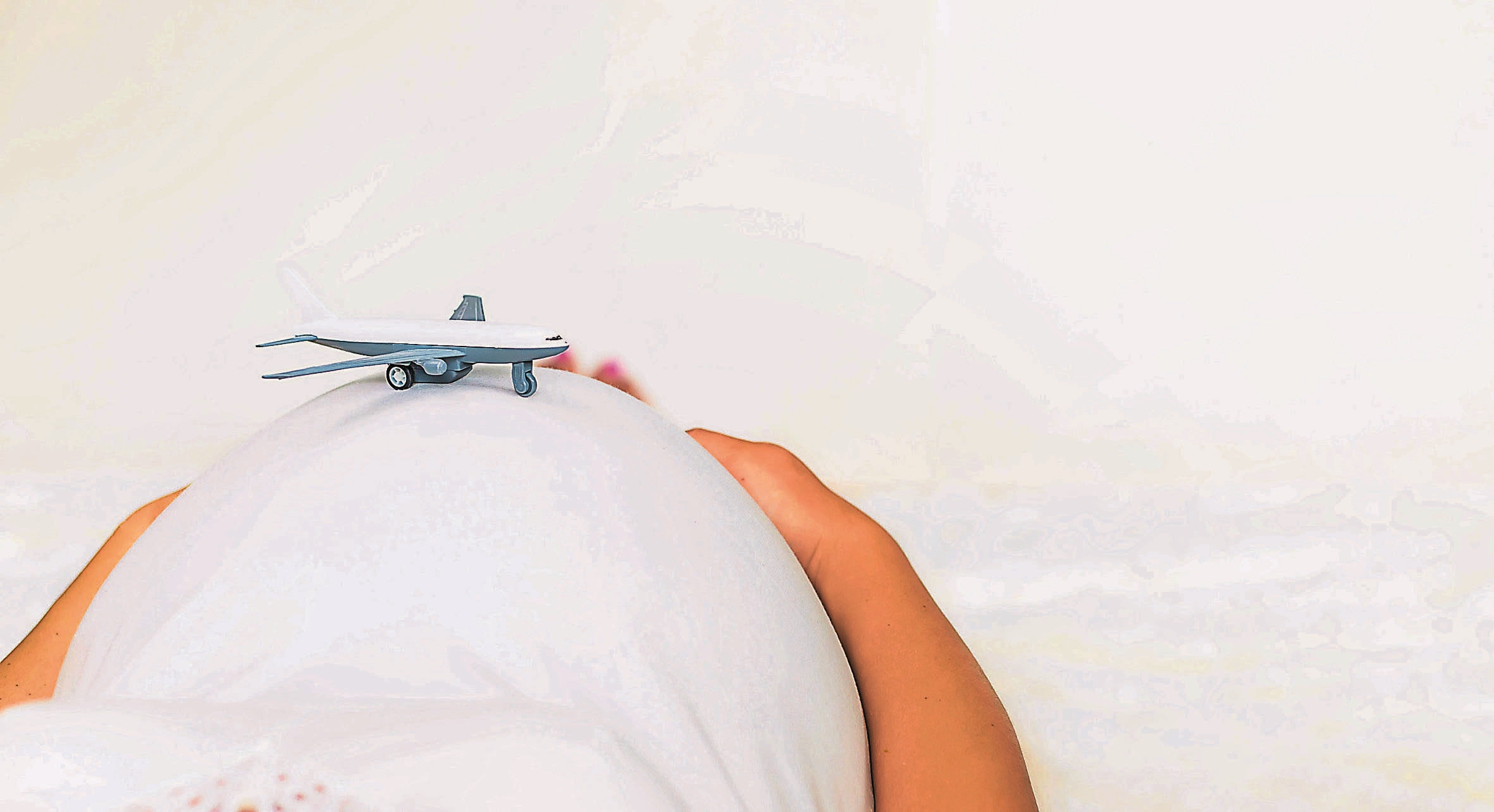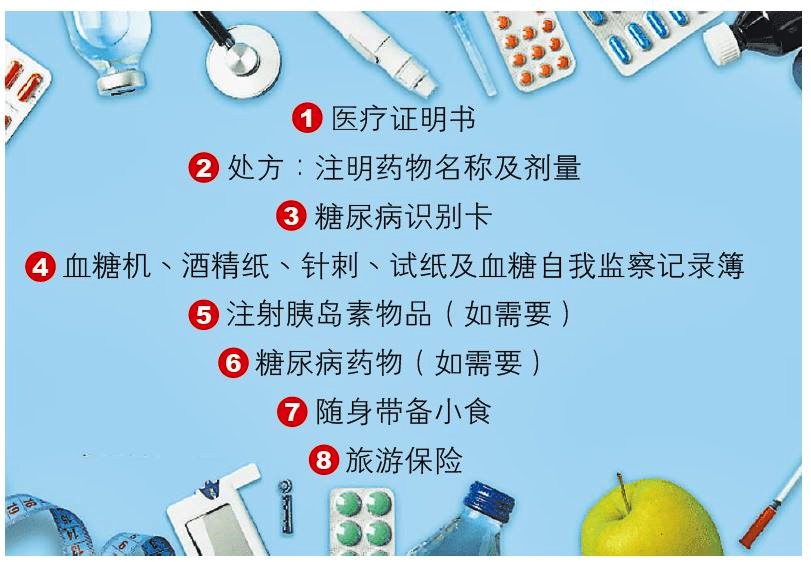【Aircraft cabin syndrome】Economy cabin syndrome is induced to prevent fatality by sitting on a plane for a long time
[ad_1]
Text: Lucy Wong “Ming Pao”
(Hong Kong News) After the COVID-19 epidemic has eased, the tourism industry around the world has recovered, and many people can’t wait to travel.
However, many people may agree that taking a long-distance flight is a “hard job”. It is actually quite tiring to stay in the iron bird for more than 6 hours, and staying in the seat for a long time is more likely to induce “economy cabin syndrome”. A warning signal from the body, which can lead to pulmonary embolism and be fatal in severe cases.
Ma Jianting, a physiotherapist at the Sanatorium and Hospital, reminded people who have cardiovascular disease, diabetics, pregnant women and other high-risk people to be extra careful, and provided 4 tips to prevent “economy cabin syndrome” caused by flying.
12 high-risk groups
According to the survey conducted by the World Health Organization in 2000, an average of every 6,000 passengers who took a flight for more than 4 hours will suffer from “economy cabin syndrome”. What exactly is “economy cabin syndrome”?
Ma Jianting explained that the common economy class seat space is narrow. If you sit for a long time without stagnation, blood clots may form in the deep veins of the feet. The most common one is the calf that is farthest from the heart. The blood flows back from the limbs to the heart, causing deep venous thrombosis (Deep Vein Thrombosis), which is also commonly known as “economy cabin syndrome”.
Any factor that damages the veins will increase the risk of deep venous thrombosis. Therefore, the following 12 high-risk groups of “aircraft cabin syndrome” must pay more attention to their physical conditions during the flight and after landing:
1/ People over 40 years old
2/ Pregnant women
3/ Patients with cardiovascular disease
4/ Diabetics
5/ Patients with varicose veins
6/ Cancer patients or survivors
7/ Those who have recently had surgery below the waist
8/ Patients who need to stay in bed for a long time
9/ People who have had blood clots or have a family history of blood clots
10/ Women who are taking oral contraceptives or receiving hormone replacement therapy
11/ smoking
12/ Obesity
Symptoms are hard to prevent
Many patients with “Economy Airline Syndrome” will experience muscle swelling, redness and pain in their lower limbs after disembarking due to blocked blood flow in their calves, and even low-grade fever and chest pain. It is hard to guard against.
If the legs are continuously swollen and red, and the skin temperature rises, and the subcutaneous veins in the legs are dilated, it is recommended that the patient seek medical attention as soon as possible, because the symptoms may reflect that the thrombus has peeled off and entered the circulatory system, and the blood clot may flow into the lungs, causing pulmonary artery disease. Embolism (Pulmonary Embolism), severe and fatal.
Doctors usually interview the patient first to understand the medical history and medications they are taking, and then arrange ultrasound and blood tests to confirm whether there is a blood clot in the patient’s bloodstream.
4 tips to help prevent
He emphasized that regardless of long-haul or short-haul flights, passengers must take time to walk and stretch to promote blood circulation and reduce the risk of blood clots. Here are 4 simple tips to help prevent “economy cabin syndrome”:
1. Try to choose a seat at the exit or aisle to increase the space for stretching your feet
2/ Wear loose clothing and avoid wearing knee socks, so as not to hinder blood circulation
3/ Walk and stretch regularly, and massage your feet, knees, calves and ankles
4/ Drink plenty of water to rehydrate your body, avoid alcohol or caffeinated beverages that can easily lead to dehydration

Dr. Li Junting
How long can you fly when pregnant?
Xu regards the health of pregnant women and non-pregnant women
Women who are pregnant in October have great responsibilities. It is inevitable to be cautious during pregnancy and try to avoid all unnecessary activities.
Traditionally, it is also believed that pregnant women should stay at home to recuperate in peace, and take care of their miscarriage.
However, with the lifting of epidemic prevention measures in various places, many pregnant women have the opportunity to travel to other places for relaxation or business. What precautions should pregnant women take when traveling abroad? What should I pay attention to when preparing medical certificates, medicines, etc. before departure?
Pay attention to diet and blood circulation
One thing that is unavoidable when traveling far is taking an airplane. Many people have many questions and myths about flying during pregnancy, such as whether the fetus is “not stable” before 12 or 13 weeks and whether it is suitable for travel.
Dr. Li Junting from the Obstetrics and Gynecology Department of the Sanatorium and Hospital pointed out that the ability to take a flight depends mainly on the health of the pregnant woman rather than the number of weeks of pregnancy. If the pregnant woman has no health problems during pregnancy, she can actually travel with peace of mind.
Pregnant women should not only pay attention to diet, but also exercise their hands and feet to stimulate blood circulation, so as not to affect blood circulation.
Have your doctor’s certificate ready
Pregnant women may be required to show a doctor’s certificate when boarding the plane, depending on the regulations of the airline they are flying on. Generally, airlines will require pregnant women after 24 or 28 weeks of pregnancy to show a doctor’s certificate within a few days.
She explained that the pre-departure checkups for pregnant women are actually not much different from the usual prenatal checkups. Usually the doctor’s certificate required by airlines needs to be issued in the near future, such as within 1 week or 10 days. Pregnant women should pay attention to the required certificates and have antenatal checkup at an appropriate time.
In addition, you should also pay attention to the time of the round trip and make sure that the doctor’s certificate is valid for both the outbound and return trips. If the doctor’s certificate has expired on the return trip, you may need to see a doctor in the local area to obtain the certificate. Of course, the greater the number of weeks of pregnancy (generally after 36 weeks), the airline has the opportunity to refuse to allow pregnant women to board the plane to avoid emergencies.
Move your hands and feet every 30 minutes
Even if you can “pass through the gate” to fly, there are still some details that need to be paid attention to. For example, pregnant women should weigh the suitability of airplane meals, and avoid salads and frozen meals as much as possible. There are also rumors that the air pressure of an airplane will affect the fetus. This is actually wrong information, but pregnant women may still experience edema due to changes in air pressure, causing discomfort in the middle ear or eardrum.
In addition, when taking a boat, a long-distance bus, or a short-distance flight, pregnant women may also have deep venous embolism, which will cause blood clots in the blood vessels and affect blood circulation. Therefore, it is recommended that pregnant women try to move their hands and feet every 30 minutes to 1 hour , to stimulate blood circulation in the body, you can also wear compression stockings and drink plenty of water. If you have problems with motion sickness or boats in the past, you must pay extra attention.
Choose a medically developed country
Li Junting believes that pregnant women should choose some countries with better sanitary conditions and more developed medical care to ensure that they can seek medical treatment in time if they feel unwell or encounter accidents at the destination.
If pregnant women travel to places with poor medical care or where infectious diseases are prevalent, the risk of contracting infectious diseases will increase and affect the health of the fetus. Pregnant women should focus on relaxation when traveling and avoid running too much.
Some pregnant women may vomit, feel sleepy and often tired in the early stages of pregnancy, and move slowly in the late stage of pregnancy. Therefore, safety should be the top priority in all activities.
Ask the doctor to bring medicine with you
As for medicines, some places require vaccinations before arrival. Pregnant women are advised to consider whether the travel destinations that require vaccinations are suitable for them, and ask the doctor for advice on vaccinations, because vaccinations do not mean that they will not be 100% sure. Infected, pregnant women must think twice before going.
She added that pregnant women should ask the doctor to bring appropriate medicines with them, because some of the common cold medicines or painkillers on the market may not be suitable for pregnant women to take. For safety reasons, they should seek medical advice first.
Be careful with raw fish and dairy products
Traveling is an opportunity to relax, but there are some things that pregnant women must not take lightly, such as avoiding lifting heavy objects and colliding with luggage. Pregnant women may experience edema during the journey, so the clothing should be loose and comfortable, and the seat belt should be buckled under the belly.
“In terms of diet, avoid eating raw, cold, and undercooked foods, and pay attention to local food hygiene issues.”
She reminded that you should be careful when eating raw fish and dairy products. Some seafood may contain heavy metals. Pregnant women should consider carefully before eating.
When traveling and arranging activities, you should be aware that not all activities are suitable for pregnant women. Pregnant women should do what they can. “It is recommended to avoid high-intensity, impact and stimulating activities, such as skiing, diving, playing mobile games, etc. When climbing mountains, pay attention to the difficulty and weather conditions, avoid falling and slipping, because it is difficult to call for help immediately in case of emergencies; Be careful of collisions in crowded places such as water parks; pregnant women also need to avoid high-temperature environments such as saunas and hot springs, and safety is the priority in everything.”


Diabetic friends should pay attention to more frequent blood sugar tests when traveling abroad and make adequate preparations before departure
After the epidemic has slowed down, many people have already planned to pack up or have traveled abroad many times. They have not left the country for three years. For some chronically ill patients who need to take medicine to control their illness, traveling will inevitably feel uneasy.
For example, diabetics need to regularly check their blood sugar and take medication to control their blood sugar levels. When traveling abroad, they should not only bring enough medicines, but also increase the frequency of blood sugar measurement and pay attention to their diet to avoid “happy blood sugar levels”. “. There is also a list of carry-on luggage!
Carry the medical record certificate and sufficient medicines before departure
Liang Zhongyi, a diabetes specialist nurse at the Sanatorium and Hospital, said that before departure, diabetics can ask the doctor to write a medical history certificate stating that they have diabetes, and briefly describe the condition of the disease and the medicines needed. In addition to being used to prove that the diabetes drugs and insulin you are carrying to pass the immigration security check, it can also be used as a reference for local medical staff in case you need to seek medical treatment at the destination.
Diabetics should also prepare sufficient medicines before departure to avoid being unable to purchase the same medicines due to language barriers, in case of emergencies. If you need to inject insulin, you should consult the endocrinology and diabetes specialist for the dosage arrangement in advance.
Dietary arrangements are easily overlooked by patients. She reminds diabetic patients that it is best to understand and understand the local food culture, cooking ingredients and food ingredients before departure. If necessary, they can also consult a nutritionist. Pay attention to whether there are suitable food choices on the menu, so as to avoid excessive intake of sugar due to temporary pleasure, which will cause blood sugar to rise. When booking a flight, you can also pre-order diabetic meals from the airline, and bring appropriate amount of snacks and candies with you to meet the needs of sudden hypoglycemia.
During travelCheck blood sugar frequently, pay attention to diet
Liang Zhongyi said that when traveling abroad, diabetic patients not only need to monitor their blood sugar index regularly, but also more frequently than usual, because emotional excitement, changes in work and diet during travel will affect blood sugar levels, and remind patients to remember to carry a blood sugar machine to measure and record blood sugar Changes, adjust insulin dose and meal size according to blood sugar level. If you have symptoms of hypoglycemia such as dizziness, tremors, rapid heartbeat, sweating, or any discomfort, you should check your blood sugar immediately.
In addition, patients with diabetic vascular disease should pay special attention to dehydration when taking a long-distance plane or car. They should stretch their joints and limbs more to maintain blood circulation and avoid vascular embolism; if the weather at the destination of the trip is extreme, pay attention to possible complications Symptoms: Especially in cold regions, care should be taken to keep fingers and feet warm and protected to avoid frostbite.
During travel, patients should try to eat regularly and quantitatively, choose high-fiber, low-fat, low-calorie foods and vegetables, and drink more boiled water, mineral water, tea or sugar substitute beverages, and avoid drinking high-sugar beverages.
In terms of medicine, some patients may need to carry insulin injections. She reminded that insulin should not be placed in checked luggage, because the temperature of the cargo compartment will drop below zero degrees Celsius during high-altitude flights, which will cause insulin to solidify and affect its efficacy. Insulin is also prone to deterioration at high temperatures, so exposure of the drug to high temperatures should be avoided. Unopened insulin should be stored in an environment of 2 to 8 degrees Celsius; opened insulin should be placed in a handbag, rolled up with a towel or towel, or stored in an insulin cooler bag at a temperature of 15 to 30 degrees Celsius , generally can be stored for 28 days.
Tips for diabetics traveling abroad:
1/ Consult with endocrinology and diabetes specialists for drug treatment and dosage before departure
2/Certificate of carrying medical records
3/ Bring enough medicines: Prepare twice or more medicines (oral medicine or insulin), and carry them in your handbag; backup medicines should be
4/ Avoid putting them in checked luggage for easy access, and keep them separately to avoid loss
5/During the travel period, do not stop using the medicine without authorization, and take the medicine or inject insulin regularly according to the doctor’s advice every day
6/ Check the blood sugar index frequently
7/ When taking a long-distance plane or car, pay attention to dehydration and do more stretching activities
8/ When going to cold areas, pay attention to keeping fingers and feet warm and protected
9/ Understand the culture and cooking ingredients of local food
10/ Eat regularly and quantitatively, do not overeat

A must-have checklist for people with diabetes
Diabetics travel abroad, in addition to increasing the frequency of blood sugar measurement and paying attention to diet, what are the must-have items in hand luggage? The following list can help you.
1/Medical certificate: The attending doctor will explain the current condition, required medicine or injection treatment
2/Prescription: Indicate the name and dosage of the drug. In case of missing the drug, you can try to buy it locally, but pay attention to the different units that sell the drug in different countries
3/Diabetes identification card: This card indicates that you are a diabetic patient, the name of the patient, the name and phone number of the emergency contact person, and the medicines you are taking and medical records of drug allergies
4/ Blood glucose machine, alcohol paper, acupuncture, test strips and blood glucose self-monitoring record book: monitor blood glucose as frequently as possible during travel, and adjust drug doses according to changes in blood glucose
5/Insulin injection items (if necessary): insulin needle pen, puncture needle, alcohol paper, insulin cold storage bag
6/Diabetes medications (if needed)
7/ Bring snacks with you: such as biscuits, candies, etc., so that you can eat when meals are delayed, avoid blood sugar drops, or eat immediately when hypoglycemia occurs
8/Travel insurance: Before departure, you should purchase travel insurance that meets your needs, and understand the scope of coverage, entrust the original receipt to relatives and friends for safekeeping, and only take a copy of the receipt for travel
[ad_2]
Source link

![[Love Wants Sexual Happiness Series 358]Find the culprit and overcome psychogenic erectile dysfunction. Don’t let pressure affect your sexual happiness.](https://chinathenews.com/wp-content/uploads/2024/04/171111-780x420.jpg)

![[Wanqingyi Care]My health, my rights, customized medical methods in the last stage of life](https://chinathenews.com/wp-content/uploads/2024/04/ZZ1-100-780x420.jpg)
![[Kidney Transplantation Special Topic]The survival rate of transplanted kidneys is high without dialysis treatment three times a week](https://chinathenews.com/wp-content/uploads/2024/04/1311-780x420.jpg)



